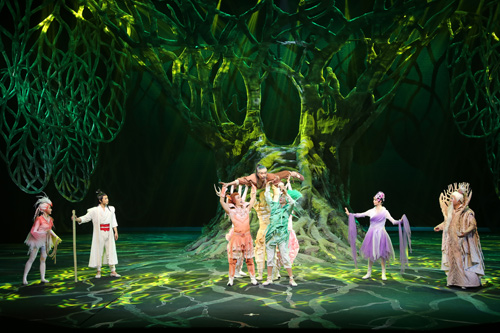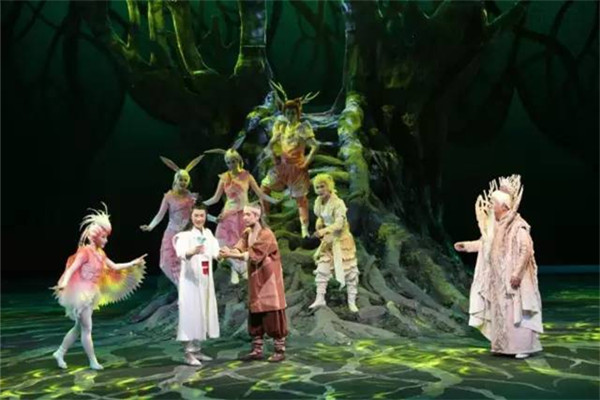Full coverage: International Children's Day
On this International Children’s Day, we celebrate the 60th anniversary of China’s National Theater for Children. The theater will be staging its first production, the tale of the magical “Malan Flower,” which is a perennial favorite with Chinese children.
“Malan Flower, Malan Flower. That fears nor wind nor rain. I invoke thy magical power. To bloom and never wane.” This ballad has inspired generations of Chinese.
The magical bloom serves as a kind of moral litmus test, opening only for the diligent and kind-hearted.

The theater stages its first production, the tale of the magical "Malan Flower".
Since 1956, CNTC has staged five versions of the play “Malan Flower” with more than 2,000 performances both inside and outside China.
“I played the role of ‘Dog Tail Grass’ in the 1990s version. The six versions of ‘Malan Flower’ over the past 60 years illustrate the development of children’s plays in China. At first, it was a play, then it was turned into a musical, borrowing a lot from Chinese traditional operas and folk dance. Then in the 1990s, the play was strongly influenced by the the Stanislavsky performance system. We’ve never stopped our efforts to tell a story that reflects the changes of the era,” said Zhong Hao, director.
In China, there is healthy demand for performances geared toward children. Tickets for CNTC shows usually sell out, especially during the Drama Festival for children held every summer, which the theater initiated in 2011.

The theater stages its first production, the tale of the magical "Malan Flower".
“We will continue to focus on providing quality shows for children as we have always done for the past 60 years. Recently, CNTC has been producing five new shows every year. We have sought to interpret both Chinese and Western classic children’s literature,” said Yin Xiaodong, president of CNTC.
Six decades ago, the China National Theater for Children opened its doors with the debut of “Malan Flower.” Since then, the magical story has played a central role in childhood for generations of Chinese. This sixth adaptation is to usher in the theater’s next 60 years.















